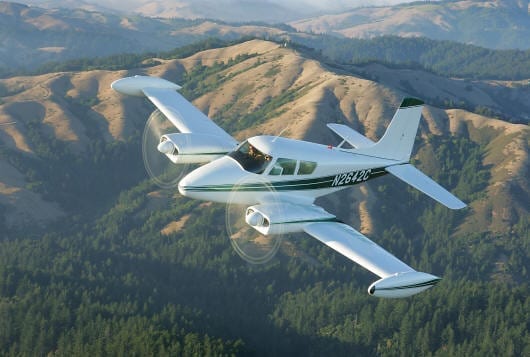The Cessna 310Q, a popular twin-engine light aircraft, has been a favorite among pilots for decades due to its reliability, performance, and versatility. Whether you’re a seasoned pilot or transitioning to a multi-engine aircraft for the first time, understanding the unique characteristics and safety protocols of the Cessna 310Q is essential. This guide provides key insights and tips for flying the Cessna 310Q safely, ensuring you and your passengers enjoy a smooth and secure flight.
1. Pre-Flight Preparation
Proper pre-flight preparation is crucial for a safe journey. Begin by conducting a thorough inspection of the aircraft, following the checklist specific to the Cessna 310Q. Key areas to inspect include:
- Engines: Check oil levels, inspect for leaks, and ensure all cowling fasteners are secure.
- Propellers: Verify that the propellers are free from damage and move smoothly.
- Fuel System: Ensure adequate fuel levels for the planned flight, and check for water or contaminants in the fuel.
- Landing Gear: Inspect for wear, hydraulic fluid levels, and proper tire inflation.
- Flight Controls: Confirm that all control surfaces move freely and are unobstructed.
Additionally, review the weather conditions, NOTAMs, and airfield information. For a multi-engine aircraft like the 310Q, understanding the impact of wind and runway conditions on takeoff and landing performance is critical.
2. Engine Start and Ground Operations
Starting the Cessna 310Q’s engines requires familiarity with its specific procedures. Use the following steps as a guideline:
- Priming: Prime the engines according to the aircraft’s manual. Over-priming can lead to engine flooding, while under-priming may cause difficult starting.
- Mixture Control: Set the mixture control to full rich for engine start.
- Throttle: Open the throttle slightly, as specified in the checklist.
- Ignition: Engage the starter and monitor the engine gauges closely. Once the engine fires, adjust the throttle and mixture as needed.
During taxi, keep the speed moderate and maintain situational awareness. The Cessna 310Q’s nosewheel steering can be sensitive, so use rudder and differential braking to maintain control. Perform a thorough run-up check before takeoff to ensure both engines and systems are functioning correctly.
3. Takeoff and Climb
Takeoff in the Cessna 310Q requires careful attention to power settings and coordination. Here are key considerations:
- Power Settings: Apply full power smoothly, ensuring both engines are producing equal power.
- Airspeed: Monitor airspeed and wait until reaching Vr (rotation speed) before gently lifting off.
- Climb: Establish a positive rate of climb and retract the landing gear. Set the appropriate climb power and adjust the mixture for best performance.
During the climb, keep an eye on the engine instruments, particularly the cylinder head temperatures (CHTs) and oil pressure. Maintaining proper engine cooling is crucial, especially in warmer climates.
4. Cruise Flight
Once in cruise, adjust the power and mixture settings for optimal performance and fuel efficiency. The Cessna 310Q’s engines are equipped with constant-speed propellers, allowing you to set a specific RPM. Monitor the following:
- Engine Performance: Keep an eye on engine temperatures, oil pressure, and fuel flow.
- Fuel Management: Balance the fuel load between tanks and consider the need for fuel tank switching during longer flights.
- Navigation and Communication: Stay on top of your route and maintain communication with air traffic control (ATC) as required.
It’s essential to remain vigilant during cruise flight, as complacency can lead to missed cues or overlooked issues.
5. Descent and Landing
As you prepare for descent and landing, begin by briefing yourself on the approach and landing procedures. Consider the following:
- Descent Planning: Start your descent early to avoid a steep approach. Adjust the power and mixture settings accordingly.
- Landing Gear and Flaps: Lower the landing gear and set flaps as needed for the approach. Verify that the gear is down and locked by checking the indicator lights.
- Approach Speed: Maintain the recommended approach speed, adjusting for wind conditions and aircraft weight.
On final approach, focus on maintaining a stable descent rate and airspeed. The Cessna 310Q’s approach characteristics are predictable, but be mindful of crosswinds and adjust your technique as needed.
6. Post-Flight Procedures
After landing, retract the flaps and complete the after-landing checklist. Taxi back to the ramp carefully, and perform a proper engine shutdown:
- Mixture Control: Move the mixture controls to idle cut-off.
- Ignition: Turn off the magnetos and master switch.
- Securing the Aircraft: Install control locks, secure the aircraft with tie-downs, and complete any necessary paperwork.
7. Emergency Procedures
Familiarity with emergency procedures is a vital aspect of safe flying. Review the Cessna 310Q’s emergency checklist regularly and practice scenarios, such as engine failures, to ensure quick and appropriate responses. Key emergency protocols include:
- Engine Failure: Identify the failed engine, feather the propeller, and secure the engine. Maintain control and assess landing options.
- Fire: Follow the appropriate procedures for engine or electrical fires, and prepare for an emergency landing if necessary.
Conclusion
Flying the Cessna 310Q can be a rewarding experience, offering a blend of performance and versatility. By following proper procedures and maintaining a safety-first mindset, pilots can ensure safe and enjoyable flights. Always stay current with your training, respect the aircraft’s limitations, and prioritize thorough pre-flight and post-flight inspections. With diligence and care, the Cessna 310Q will provide many memorable journeys in the skies.

Leave a Reply